When we go shopping or peel an apple, we don't really think about the origins of the various fruits that grace our tables, as they are such a part of our daily lives. Yet, if they could speak, they would tell us the incredible journey that brought them to us, from the earliest times!
These juicy and fragrant fruits that we enjoy throughout the year mostly appeared long ago in distant lands, although some arrived on our old continent more recently.
As I shared the epic of vegetables in a previous episode, I invite you this summer to continue this tasty journey into the colourful world of our most familiar fruits.
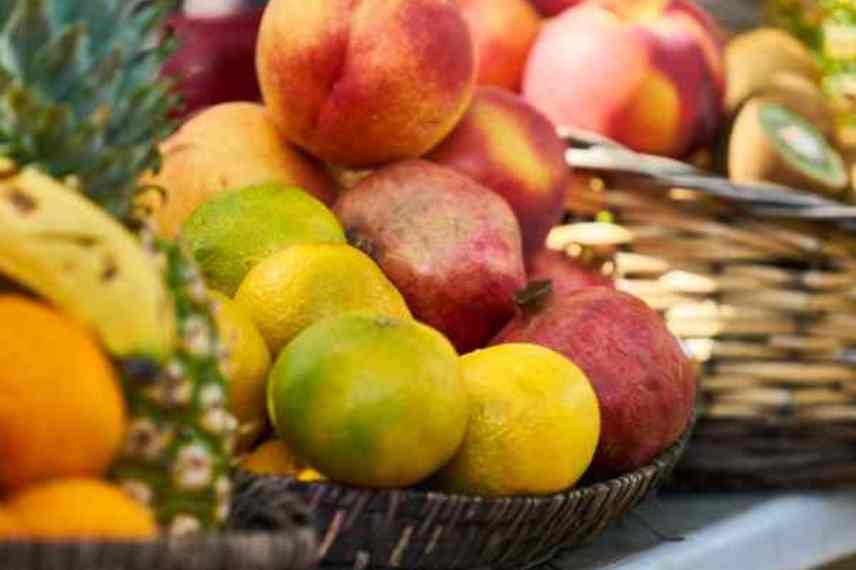
Origin of fruits: the continents that they originate from
There are nearly 150 different fruits in the world... and thousands of varieties. While we associate some with a national culture, the vast majority come from countries, or even distant continents. Some, like cherries or pears, have two distinct origins. Here are the distribution areas and origins* of some of the most consumed fruits today, by continents and major regions of the world:
- America: pineapple (Brazil), avocado (Mexico), tomato - botanically a fruit! - (Mexico and Central America), papaya (Central America), guava (Central America and Brazil).
- Asia: pear, peach, apricot, kiwi, and orange (China), banana (Southeast Asia), lemon and mango (India), pomegranate (Central Asia, Afghanistan).
- Middle East: fig (Turkey), date (Mesopotamia), pomegranate (Iran), cherry (Anatolia).
- Europe: apple (Caucasus), pear (Europe and Asia Minor), grape (Middle East and Europe), strawberry (Europe and North America), grape (Caucasus and Southern Europe).
- Africa: watermelon, melon.
* This distribution lists fruits native to countries that were later introduced to other regions of the world, before becoming naturalised in some.
Fruits through time and cultures
Wild berries, ancestors of our blackberries and raspberries, were an important part of the diet of hunter-gatherers and were consumed by prehistoric humans long before agriculture developed.
But one of the oldest cultivated fruits in humanity is considered to be the fig. It is believed to be the first fruit to have been domesticated, even before cereals in some regions of the present-day Middle East. Excavations in the Jordan Valley, in the Jericho region of the West Bank, have uncovered carbonised figs dating back to around 9000 BC. Dates were also cultivated from antiquity.
In the Middle Ages and the Renaissance, fruit cultivation developed in Europe and Asia. In European monasteries, the creation of the kitchen garden with the medieval enclosed garden played a crucial role in the preservation and development of fruit cultivation, particularly of apple, quince, and cherry trees. The medieval orchard is associated with the lost paradise, and many illuminations depict it. Fruits like apple, pear, and grape made their way to the tables. The Crusades and later the great maritime expeditions would enrich the diversity of available fruits. This was a time when fruits were often consumed in dried form, allowing for longer preservation (figs, apples, apricots, plums, and cherries).
During the Renaissance, trade introduced new varieties of grapes, enriching European viticulture. The Crusades also facilitated the introduction of citrus trees to Europe, significantly transforming eating habits. Horticulturists and later fruit growers made decisive advances in fruit-growing techniques (grafting, cultivation on trellises, and the creation of fruit shapes, hardening under glass), leading to the fruit heritage as we know it today.
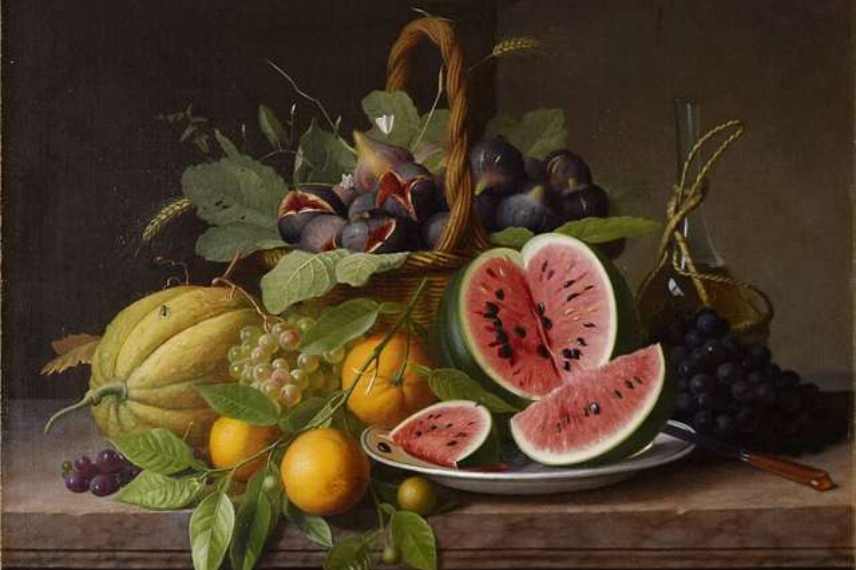
Photo Wikimedia Commons
Discovering three iconic fruits: pear, melon, and strawberry
Among the wide array of fruits available to us today, I have chosen to talk about three fruits that have now become part of our consumption habits.
Pear: millennia of know-how and innovations
A common fruit today, the pear is counted among around sixty species, and nearly 2000 varieties worldwide!: Comice, Conference, Williams, Passe Crassane, or Guyot... to name just a few of the most common in our markets.
It is actually one of the oldest fruits cultivated in the Northern Hemisphere, and its history dates back millennia.
Originating in Asia, the pear later made its way to Europe. In China, where writings dating back to the 5th century BC mention it, it has been cultivated for over 5000 years. Remains and seeds of pears (Pyrus communis) have been found in the lake dwellings of present-day Switzerland and in prehistoric Neolithic sites. While it appears in Egyptian and Greek civilizations, it was the Romans who first developed and improved this fruit by practising early grafting. By 50 AD, there were already 35 different species.
The pear established its presence in Europe from the Middle Ages, but at that time it was little appreciated, often cooked, and had various unflattering names (anguish pear or rosy stone). Quintinie (1626-1688) truly gave it its letters of nobility: King Louis XIV was fond of it (well... mainly to decorate his gala tables), and it was from the 17th century that cross-breeding began, with quince trees. Improvements in fruit cultivation techniques then allowed for the production of higher quality pears, much more melting, contributing to their growing popularity among both nobles and commoners. Five hundred species were already recorded during Quintinie's time, including the stars of the era, Bon Chrétien or Cuisse-Madame.
The Williams pear was born in 1796, the Conference pear was named in 1885, and the Angelys pear, one of the latest, was born in 1998. It is now marketed under the name Angys®, a product of Angevin research from INRAE (hurray!), resulting from a cross between Doyenné du Comice and Doyenné d'Hiver.
Asian pears (Pyrus pyrifolia) and their descendants are crunchy-fleshed fruits, like the Nashi, while our common European pear trees (Pyrus communis), descended from wild pear trees in the mountainous regions of the Caspian Sea, produce tender and juicy fruits. Even today, we distinguish between "knife pears" for raw tasting, melting pears, and "cooking pears," much like with apples. The main edible species come from Pyrus pyrifolia. In Asia, there are nearly 3000 varieties from Pyrus pyrifolia, Pyrus ussuriensis, and Pyrus bretshneideri, some of which are hardy to below -30°C.
The sixth favourite fruit of the French, available all year round in our markets, and in world-renowned recipes like pear Belle Hélène, this fruit continues to charm us. Notably, the largest producer of pears in the world is once again... China, with a production of 16.5 million tonnes of pears. Strangely, 50% of the pears consumed in France are imported, knowing that our main producing regions are the Loire and Val-de-Loire regions.
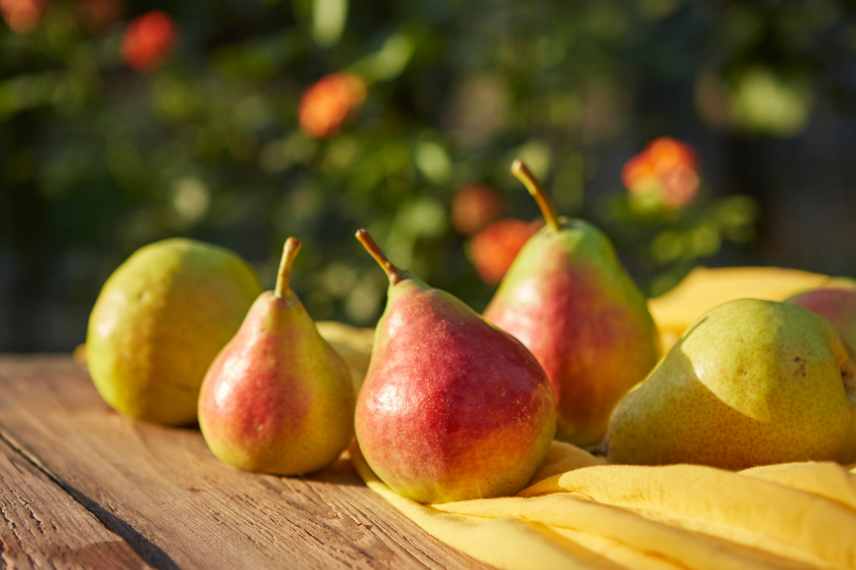
Apricot: from Tibet to Provence
Its botanical name, Prunus armeniaca, mistakenly attributed by Carl von Linné, would suggest an Armenian origin for the apricot tree. This is not the case, as this highly appreciated summer fruit, associated with the Mediterranean basin, actually originated on the foothills of the Himalayas, between Turkestan, Tibet, and Manchuria, just like our good old peach. This wild ancestor of the modern apricot tree was introduced much further east, indeed passing through Armenia, via the Silk Road. The apricot arrived in the West in already improved forms, as the Chinese had been cultivating it for millennia. It conquered Greece and the Roman Empire at the very beginning of the Christian era. The Romans named it praecoquum, meaning the early fruit, and later Punum armeniacum, in reference to its introduction in Armenia. The name apricot would not appear in the French language until the 16th century, borrowed from the Spanish albaricoque, which itself derives from the Arabic al-barqūq.
It was the Moors who, in the 8th century, brought the apricot to Spain. It was not until the 16th century that this fruit gradually began to be appreciated. The good King René, who inherited the kingdoms of Naples and Sicily, is said to have introduced the apricot tree to Anjou a century earlier, around 1435. During the Middle Ages, it had a poor reputation, thought to cause fever. It took time before the apricot was consumed raw, as we do today by biting into the sun-warmed fruit right from the tree. Quintinie himself reserved it exclusively for cooked preparations like jams or compotes. It wasn't until the 18th century that its cultivation expanded in the southern regions of France, and more and more varieties began to emerge.
The modern apricot has thus been cultivated in our regions for less than 500 years. Today, the main apricot-growing areas are still the Mediterranean basin, with France being the 17th largest producer by volume. Turkey, the world's leading producer, primarily produces dried apricots from varieties particularly suited for drying.
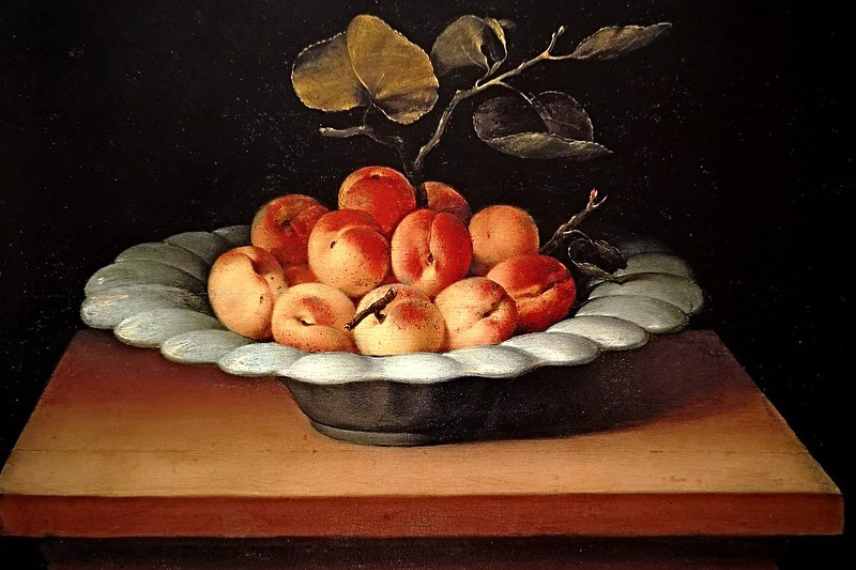
(oil on wood panel, circa 1630; Rennes Museum) - Photo Wikimedia Commons
Melon: an unloved fruit turned summer star
The orange-fleshed melon, bursting with sugar and sunshine that we enjoy in France in the heart of summer (Cucumis melo), originating from Africa and Asia, also has a fascinating history. Cultivated since antiquity in Egypt and Mesopotamia, it was then appreciated for its seeds as much as for its flesh. It appears, along with watermelon, in tomb frescoes. The Romans, likely the ones who introduced it to Europe, knew it but often preferred watermelon (Cucumis citrullus), finding it rather bland. At that time, the melon was actually considered more of a vegetable and was often consumed cooked and salted or in salads.
In the year 800, Charlemagne mentions it among the recommended plants in the Capitulaire de Villis, using the name given to it by the Greeks, "pepon" ('cooked by the sun).
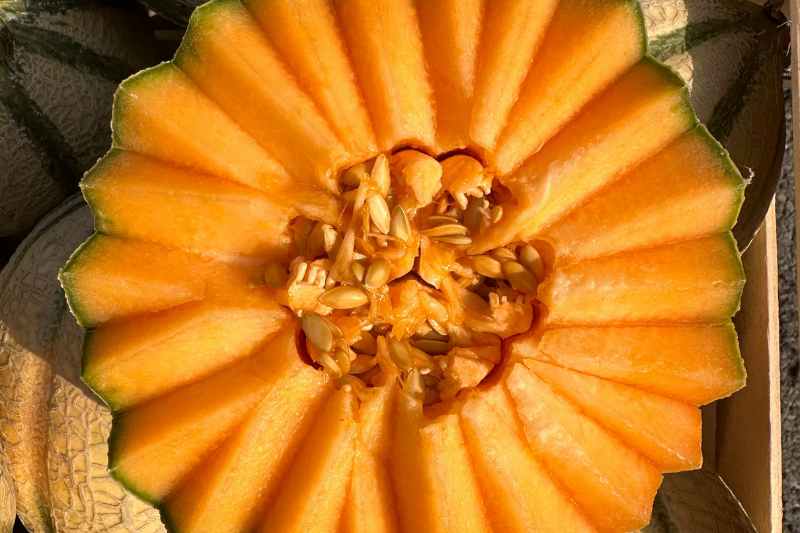
This delicate fruit began to acclimatise in Europe thanks to the development of greenhouses, starting in the 17th century, which allowed it to be hastened and consumed year-round, as demanded by the nobility. It became larger and tastier. In France, the melon, like other fruits or vegetables, still had a poor reputation, often perceived by doctors as a dangerous food, causing indigestion due to its harmful juices, the "succum pessimum". Several popes even died from excessive consumption, as was said of Clement VIII. This reputation gradually faded in the 18th century, where an author like Marc-Antoine Girard de Saint-Amand made a flattering description in a poem full of finesse: The Melon. Voltaire even crowned it "the masterpiece of summer." Since 1780, the cantaloupe melon, round and with orange flesh, from the summer residence of the popes of Cantaluppi, became known in French gardens. The Marquise de Sévigné and later Alexandre Dumas became ambassadors of the Cavaillon melon, the former for her adoration of this Provençal fruit, the latter for having it delivered to him until his death as a life annuity in exchange for books!
Greenhouse and cloche cultivation methods improved, and the large melon cloche appeared in the 18th century, still used today by those fortunate enough to possess one. It became a fruit that signified a high social status.
Although few writings confirm it factually, it is often said that melons, due to their increasing market value and popularity, became targets of theft when grown in enclosed and monitored gardens, particularly in Europe during the 17th and 18th centuries.
Today, the melon is enjoyed worldwide and is cultivated in open fields or greenhouses in many regions. France is one of the leading producers in Europe, with Provence and Charente renowned for the quality of their melons. Charentais melons, recognisable by their orange flesh and wrinkled skin, are prized for their sweet and fragrant flavour. The Cavaillon melon remains a summer staple. In France, we are the thirteenth largest producer of melons globally, but we must import them (mainly from Spain and Morocco) for our summer consumption.
As for yellow melons or sweet melons, they are associated with Spain, where they are widely consumed. These melons, also known as Santa Claus melons or 'Piel de Sapo' melons (toad skin), have a green speckled skin and a very refreshing white or green flesh. They are primarily cultivated in the Spanish regions of Murcia, Andalusia, and Valencia.
The new hybrids and exotic fruits
Most of our fruits date back to very ancient times, but some fruits only appeared late in our kitchens and on our tables. These are mainly exotic fruits that our palates began to discover and appreciate at the dawn of the 20th century, such as the kiwi, originally from China but cultivated in New Zealand since the early 20th century, and only becoming popular in Europe from the 1960s, or the lychee, which appeared in Europe as early as the 18th century thanks to colonial imports. The prickly pear, now available in some markets, had remained relatively unknown in the West since Christopher Columbus.
Since the 1970s and 80s, other fruits have appeared on the market, born from the hybridization of two species, horticultural selections, genetic manipulations, or natural mutations. Some are still little known, such as the boysenberry or blackberry-raspberry, a cross between a raspberry and a wild bramble, and the caseille or cassisberry, another cross of red fruits between a blackcurrant and a gooseberry. The aprium, born from the (American) love affair between a plum and an apricot tree, the pluot, another hybrid between plum and apricot, are other laboratory discoveries. Citrus fruits are not left out, with notably the tangelo (or Minneola), a hybrid of a mandarin and a grapefruit, less acidic and sweeter than a pomelo. The Americans, who have also developed pink blueberries (like 'Pink Lemonade'), are often behind these more or less fanciful genetic discoveries...
All these new fruits are proof that fruit innovation has not yet said its last word in adapting, among other things, to the new global climate challenges.
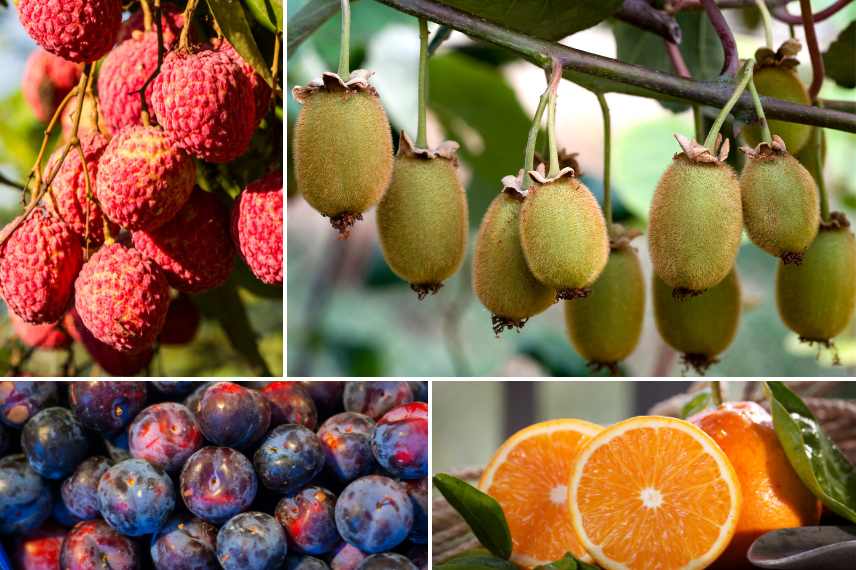
Heirloom and forgotten fruits
We are also currently witnessing the rediscovery of forgotten fruits like quince, medlar, jujube, or persimmon, often brought back to the forefront by chefs or organic orchards. Would you like to learn more about these ancient fruits? Browse our articles and recipes:
- Growing the male dogwood for its fruits
- The jujube tree: planting, pruning, and caring for
- How to make quince jelly? and How to harvest and store quinces?
- How to harvest and store medlar?
- How to harvest and store persimmons?
- Physalis: sowing, cultivation, harvest
- The beech nut: an edible fruit to discover.
Further reading: some useful books and websites
For botanists or history enthusiasts and those passionate about local and ancient fruit varieties, I recommend the following works (in French):
- The ABCs of Fruits, Antoine Jacobsohn. Flammarion Editions. 1997. A condensed source of information by the head of the King's Kitchen Garden.
- Astonishing Stories of Fruits. Bertrand Dumont. MultiMondes Editions. 2022.
- Fruits from Here and Elsewhere: Insights into the History of Some Fruits Consumed in Europe. Marie-Pierre Ruas. Omniscience Editions. 2016. A bible that will delight history enthusiasts.
- Rediscovered Fruits, Heritage of Tomorrow. History and diversity of ancient species from the Southwest. Evelyne Leterme and Jean-Marie Lespinasse. Rouergue Editions. Redouté Prize 2008. Another extensive book.
- And a historical detective novel by Michèle Barrière, Murder in the King's Kitchen Garden, about the famous thefts of melons at Versailles: a delightful summer read.
Several associations and organisations allow for further learning about the origin and conservation of fruits:
- The Apple Crunchers, who have been advocating for the preservation of regional fruit varieties for years.
- Forgotten Fruits: a network that contributes to the promotion and preservation of fruit heritage.
- The National Centre for Pomology, an association dedicated to the conservation, study, and promotion of fruit varieties, particularly ancient and local varieties.
To extend this reading, discover the ancestral history of the fig in this excellent article by Alain Bonjean in the Chronicles of Vegetal. You will learn all about the genomes of the apricot in this publication from INRAE. And Eric Birlouez tells you much more about the apricot's journey in his podcast on France Inter...
Finally, listen to a delightful segment, In the Intimacy of History: The Pear, an Erotic Fruit, narrated by historian Clémentine Portier-Kaltenbach.
.































Comments